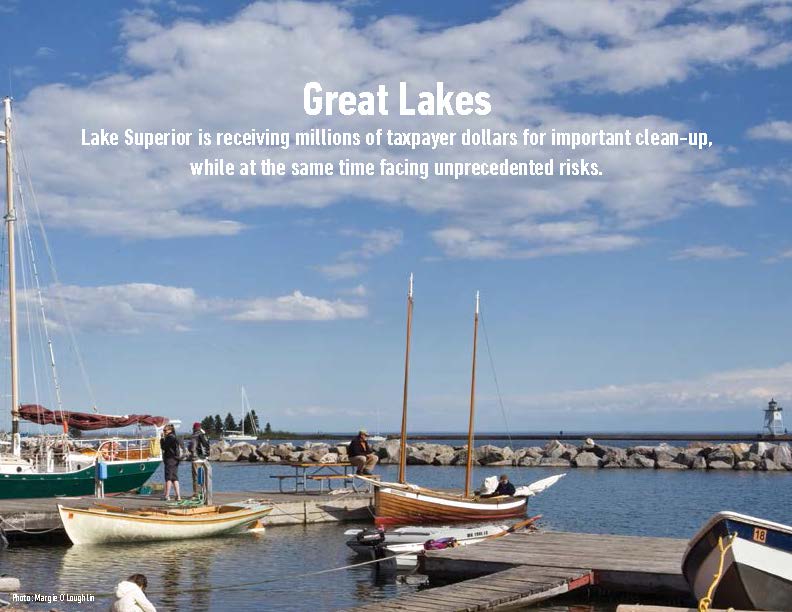
MEP Cluster Contact: Sasha Lewis-Norelle, slewisnorelle@cleanwater.org
Minnesota is the headwaters state for the Great Lakes, counting 190 miles of rugged Lake Superior coastline among its natural assets. The North Shore contains countless trout streams and eight state parks. While Minnesota’s Great Lake is widely viewed as the cleanest of the five Great Lakes, it can also be considered the most threatened.
The Great Lakes Restoration Initiative is cleaning up Lake Superior
The Great Lakes region’s business leaders, mayors, governors, tribes and conservation and environmental communities have worked together since 2005 to implement a science-based plan of action known as the Great Lakes Restoration Initiative (GLRI). The GLRI is a long-term regional plan to protect and restore the Great Lakes while stimulating the region’s economy. The first seven years of funding provided Great Lakes projects in Minnesota with an estimated $70 million in federal grants, with an emphasis on the St. Louis River estuary – an area polluted by industry decades ago.
The GLRI has also funded North Shore trout stream restoration, research on ballast water treatment and support for tribal engagement. The North Shore’s famed Poplar River is now celebrating successful clean-up of their long-term water turbidity problems.
What we can do:
- Support state matching funds for Lake Superior The GLRI has been a powerful tool to address our state’s restoration needs. Minnesotans help lead the way by supporting full Congressional funding of the GLRI. An unprecedented action plan maps out nearly 60 steps to restore the St. Louis River by 2025. Bonding funds of $25.5 million secured by the MPCA in 2016 were matched by $47.2 million in federal funds and work is underway to remove polluted riverbed sediment from the St. Louis River estuary. We see a future where people and wildlife can safely enjoy this beautiful area.
Here at home, we must take advantage of federal funding by leveraging state dollars, including funds from the Clean Water Land and Legacy Amendment and capital bonding. In western Duluth’s riverfront neighborhoods, the complex Grassy Point-Kingsbury Bay project will recreate habitat and reopen shoreline sites to the public, supported by Legacy dollars, GLRI funds, and even local and private funding.
- Maintain strong standards to protect the St. Louis River from water quality threats. MEP commissioned a report on the dangerous levels of mercury in the St. Louis River, and how the issue is linked with sulfate pollution that flows downstream from industrial facilities. Minnesota needs an action plan to keep sulfate out of Lake Superior’s largest tributary and thereby keep mercury out of the food chain.
Proposed sulfide mines in Northeast Minnesota, including the PolyMet NorthMet project and the Twin Metals Minnesota project, threaten our lakes and rivers with significant ongoing water pollution. Sulfide mines, which are different from traditional iron ore mines, have never been operated safely. We need to protect Lake Superior from this threat.
- Maintain protection of Minnesota’s waters from ballast water contaminated with invasive species. Recent federal legislation regarding shipping vessels gives Minnesota the opportunity to participate in critical research and technological development to treat ballast water and protect our waters from new invasions.
- Finish the long-delayed St. Louis River mercury clean-up plan. The Total Maximum Daily Load study is critical to protecting our communities from health-related impacts. The study has been delayed for too long.
RESOURCES
MEP-commissioned report: Mercury in the St. Louis River Watershed
Follow us on Facebook or Twitter, or subscribe to our Environmental Insider email to keep up with the latest.